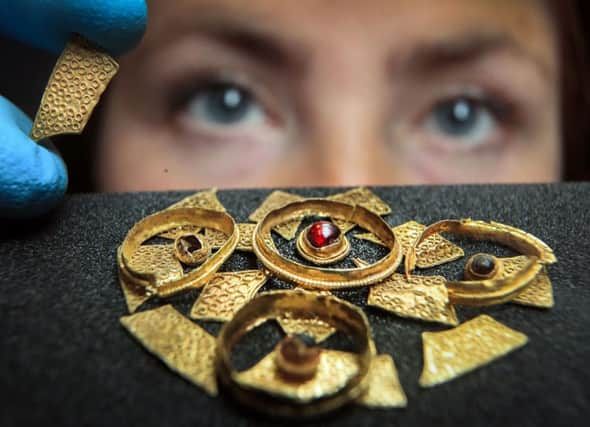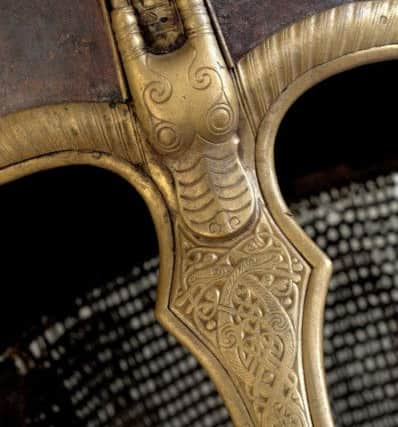York's '˜Acomb Grave' gives up its secrets


But one of its gardens has given up a secret that is centuries older still.
A remarkable collection of 116 jewels and other artefacts literally torn from the grave, sheds new light on the city’s dark years between the departure of the Romans and the arrival of the Vikings.
Advertisement
Hide AdAdvertisement
Hide AdA builder working outside a house in the area uncovered the objects just over a year ago, and yesterday they were shown for the first time, at the beginning of a conservation project from which curators hope to glean more about their history.


Believed to have come from the burial site of a woman, the items include an Anglo-Saxon disc brooch, broken into small pieces but apparently made from gold sheet, decorated with finely worked decoration and surrounded by red glass.
“We can assume that this would have been worn by a woman of very high status in life,” said Lucy Creighton, curator of archeology at the Yorkshire Museum, which plans to put it on public display later in the year.
Alongside the brooch were glass beads which would have originally been an elaborate necklace.
Advertisement
Hide AdAdvertisement
Hide Ad“The find of a necklace and brooch together suggest that these objects were likely buried alongside an elite noblewoman, said Ms Creighton, who believes that Northumbrian royalty might have been involved.
York was at the centre of Northumbria during the first half of the seventh century, from which the objects date – but its boundaries did not stretch as far west of the city centre as Acomb, and the district has been less of a gold mine metal detectorists than the central area around Coppergate, from where the York Helmet, an outstanding example of Anglo-Saxon headgear, was unearthed in 1982. It dates from around a century later than what is now being called the Acomb Grave find.
It was a period that saw the advent of Christianity in York, following the mission of the Roman missionary Paulinus, the first Bishop of York. The settlement he discovered was one of the most significant in Britain, with an abundance of craftspeople.
Ms Creighton said it was “fascinating” to see the fragmented parts of the brooch and its companion pieces.
Advertisement
Hide AdAdvertisement
Hide Ad“We can really see how the objects were constructed. We get a sense of how beautiful and complex they were,” she said.
Experts do not yet know why Acomb would have been chosen as a burial site.
“Like other single objects from this period discovered in different parts of York, there is no context,”Ms Creighton said.
“York was an incredibly important centre for religion and trade, but we know little about it in the period directly after the Romans left.
Advertisement
Hide AdAdvertisement
Hide Ad“We know that people were in the area – we have their graves so we know they were dying here. But we don’t know where they were living. It might have been within the city walls, as the Romans were, but it’s less clear.
“They just don’t leave the traces behind that we would want.”
Asked whether other objects might still be awaiting excavation near the site of the Acomb Grave, she said: “As is often the case with archaeology, we are left guessing somewhat. Not all the avenues of research have been possible.”